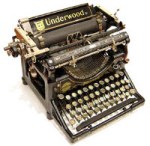This post takes its lead from what Unicornblues published on Way Too Fantasy.
Take a minute and please check it out.
Done?
Fine.
Now.
 I agree absolutely with the fact that given the wide choice of possible settings – historical, psaeudo-historical and completely made up – the matter of diversity in imaginative fiction and in fantasy in particular should be easily settled.
I agree absolutely with the fact that given the wide choice of possible settings – historical, psaeudo-historical and completely made up – the matter of diversity in imaginative fiction and in fantasy in particular should be easily settled.
Heroic fantasy and sword & sorcery, in particular, play on elements which include globetrotting, clashing cultures and mixed, bazaar-like settings.
I could simply point at the Hyborian world Robert Howard created, and consider the matter settled.
Howard put Conan through the grinder in a variety of cultural environments, from quasi-Roman Aquilonia to the Harold Lamb-influenced horse tribes of the eastern steppes, all the way to the Black Kingdoms and the native-american-influenced Pictish forests of the north.
Granted, the Cona stories are not the model I would suggest for a multi-ethnical fantasy – but the setting does provide the tools for it.
Our modern sensibilities provide the need, and the spark, so to speak, to tell such stories.
But also, our historical past was much more multi-ethnical than we are normally led to believe.
Vikings raided the Mediterranean shores, the Chinese probably reached North America (and met the Aztecs? Wow! That’s a start for a good story! Or were they the Mayas? Ah, it would be great anyway!)
And obviously the Silk Road (you knew I was heading in this direction!) was a melting pot of cultures, genes, stories – witness the variety and diversity of the so called “Arabian Nights“.
No historical empire worth its name was ever a single-culture, single-ethnicity thing.
But let’s look at the whole thing from another side, shall we?
When I write fiction, everything in my story should be in the service of the story.
So, does diversity serve my story?
I think in most cases the answer is yes.
A well-varied, multi-ethnical or multi-cultural world simplifies a lot of things: it creates conflicts, hints at deep history, provides colour and wonder.
Avoiding such a powerful tool for the sake of some supposed “historical accuracy” is, in my opinion, not very wise.
All in all, using diversity in fantasy does not mean placing tokens in my narrative, but actually using characters and setting to make the texture of my narrative deeper and more satisfactory.
So, why not?
Related articles
- How do we really feel about diversity? (joekay617.wordpress.com)
- Close encounters of the Arab kind (bbc.co.uk)
- Robert E. Howard (trolldens.blogspot.com)
- The Legends of Red Sonja Roundtable with Gail Simone, Devin Grayson and Nancy Collins (comicsbeat.com)
- Watch: Terry Pratchett, A S Byatt and Terry Eagleton on fantasy, fiction and desire (newstatesman.com)


12 October 2013 at 02:19
“A well-varied, multi-ethnical or multi-cultural world simplifies a lot of things: it creates conflicts, hints at deep history, provides colour and wonder.
Avoiding such a powerful tool for the sake of some supposed “historical accuracy” is, in my opinion, not very wise.”
Exactly. 🙂
LikeLike
12 October 2013 at 04:18
Great post. I got in a discussion the other day about how the idea of a ‘lily white’ medieval world is either the product of racists and social darwinists, or politically correct writers who equate European with White and Evil, and has nothing to do with actual European history, what with the Caliphate in Spain, the misciela of Normans and Franks and the descendants of Romans in France, Magna Grecia in Italy, the various Asiatic and Turkic tribes in Magyarorszag and Ukraine and the Balkans and mingling with that mix of Romans and Slavs and other ‘Europeans.’ Character traits should serve the story, and making your hero a left-handed Tajik lesbian Bocce-ball Champion will do nothing to help your story, unless the problems she encounters (or the solutions she comes up with) are born of those traits.
LikeLike
Pingback: NaNoWriMo and the Diversity in SFF Debate | Way Too Fantasy
Pingback: The Detective with a Funny Hat | Stark Writing Crazy
12 October 2013 at 09:32
History is quite clear about ethinc diversity: it’s a ever-present factor, no matter the part of the world we’re talking about. As soon as somebody start to travel out of his village the concept of meeting “diversity” became reality.
In fiction those who choose (yes, its’ a choice) to erase diversity are telling us just one thing: they do no want diversity in real life. The name of the game became racism.
LikeLike
12 October 2013 at 21:37
Thanks everybody for the comments.
I think the main problem with political correctedness is, it makes us stop thinking at the problem, it just helps us sweep it under the rug.
A good, solid, fun story, written to show the marvel and variety of a multicultural world can do much more to help us become better people than any tweak to our language or our narrative for fear of offending someone’s prejudices.
LikeLike